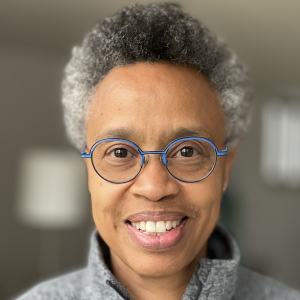Welcome to New Department Chair Annette Lawrence, Edna J. Koury Distinguished Professor of Studio Art

The department of art and art history is pleased to welcome Annette Lawrence as its new chair and the Edna J. Koury Distinguished Professor of Studio Art. Professor Lawrence comes to UNC-Chapel Hill from the College of Visual Arts and Design at the University of North Texas (UNT), and brings with her a great deal of experience and many accomplishments as an artist, teacher, and administrator.
As an artist, Professor Lawrence creates complex, visually striking paintings, drawings, and installations that thoughtfully engage with her environment and events taking place around her. Her artistic practice and leadership share a commitment to, in her words, “rigorously consider what counts, how it is counted, and who is counting. This process of questioning and analyzing also informs my approach to leadership. I’m committed to facilitating the experience of making and unmaking, looking and waiting, and finding or recognizing what is in front of us by paying attention.” Over 24 years at UNT, Professor Lawrence became a trusted leader among her peers, culminating in serving as chair of the Department of Studio Art for four years. As a voice for the department within the college and the university, she successfully advocated for enhanced facilities and staffing, among other accomplishments.
In her teaching, Professor Lawrence is committed to facilitating students’ explorations of their own sensibilities and guiding them to develop the skills they need to achieve their visions. She earned her BFA in sculpture from the Hartford Art School at the University of Hartford, and her MFA in painting from Maryland Institute College of Art.
Professor Lawrence’s work has been widely exhibited, including in solo shows at the Dallas Museum of Art, the Modern Art Museum of Fort Worth, and the Museum of Fine Arts, Houston, and group exhibitions at the Studio Museum in Harlem and the Museum of the African Diaspora in San Francisco, as well as in the Whitney Biennial. She received a MacDowell Fellowship in 2018, and has been honored with residencies at Skowhegan, the Core Residency Program, and the Bag Factory in Johannesburg, among other honors.
Professor Lawrence’s arrival at the University of North Carolina at Chapel Hill is a homecoming of sorts, as she has deep familial connections with the state. Her maternal grandparents were from North Carolina, and moved to Queens, New York, during the Great Migration of the 1930s. Professor Lawrence was born there, and spent summers as a child visiting aunts, uncles, and cousins in Oxford, Mt. Olive, Dudley, and Raleigh, North Carolina—places where some of her relatives still live today. She looks forward to building new connections and community far beyond the department of art and art history and the UNC-Chapel Hill campus.
